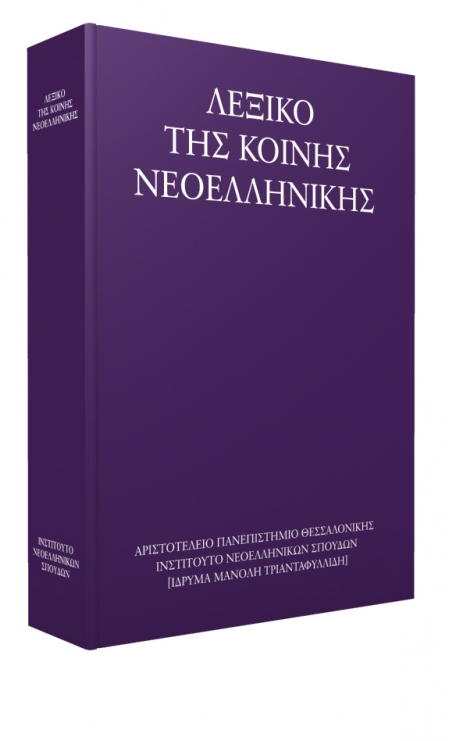Description
This is a handy explanatory dictionary, which aspires to present the Modern Greek language as it is spoken by the average Greek speaker, used in Modern Greek literature and in the press, and heard on television and the radio.
The dictionary aims to provide reliable and scientifically informed answers to the diverse questions posed by today’s user of Modern Greek, offering information about the multiple meanings, the diverse uses, the correct inflection, the proper pronunciation and the valid etymology of the words which make up the complex mosaic of our language. As it describes the function and use of Modern Greek at the various language levels and in all the fields of social life, the dictionary is intended for the wider educated readership wishing to get to know the language better and use it correctly and efficiently. However, particular care has been taken so that the dictionary can meet the needs of Greek pupils and students, teachers of all levels of education, as well as the needs of foreign philologists or philhellenes who either speak the language or are in the process of learning it.
Overall, the structure of the entries is as follows: immediately after the entry its phonetic transcription is given, based on the International Phonetic Alphabet, which has been modified in order to meet the dictionary’s special needs. The grammatical category of the word follows, accompanied by an Arabic number, which is used as a reference guide to the word’s inflection to be found in the analytic inflection tables at the end of the book. In the sematic section of the entry, the different meanings of the word are listed in such a way as to make it easier for the user to proceed from one meaning to the next in a logical and consistent manner. Semantic descriptions such as (fig.) and (exp.) justify the listing and specify the semantic evolution of each word. One of the dictionary’s innovations lies in the fact that every entry is accompanied, when this is deemed necessary, by an indication of language level. Special care has been taken to ensure that the examples used are concise, clear and illustrative, and help users fully grasp the information provided in the semantic section. The etymology of every entry is given at the end.
The whole project was supervised by a committee made up of three members of the Institute’s Board of Directors, Professors D. Lipourlis, M. Setatos and K. Tsantsanoglou. The editorial team included the following philologists: E. Mavrakaki-Poliviou, G. Moros, N. Papaioannou, A. Simota-Vasila, N. Fotiou, S. Vergi, and P. Florou-Panagiotopoulou. The team was originally supervised by A. Anastassiadis-Simeonidis, and subsequently by A. Tzivanopoulou. The etymology sections in the entries were compiled by professor E. V. Petrounias, assisted by G. Papanastasiou.
Reviews
No posts found









